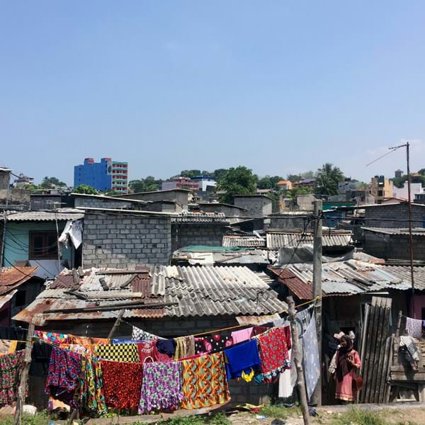Sri Lanka’s largest city, Colombo, reflects the ethnic and religious diversity of the island. The city’s official population is about 750,000, but the Greater Colombo urban area has a population of more than 2 million. Colombo has a hot tropical climate with a monsoon season that results in localised flooding every year. Due to the history of urban development of the city, there is very little spatial difference between the wealthy and the poor. The centre of Colombo has old colonial buildings with plenty of hotels to accommodate tourists, while informal settlements and communities have developed in any space available – often originating in gardens of larger properties. It is the city’s diversity that makes it so distinct from elsewhere in the country, with three broad ethnic groups – Sinhalese, Tamil and Muslim – living, working and interacting at close quarters.
The team are working in four neighbourhoods, chosen to reflect the different histories of their communities. All had origins in self-build squatter settlements, but some have now been given deeds to remain. Housing varies from permanent to semi-permanent structures and many families are waiting to be relocated to high-rise buildings as part of a state-led regeneration project.
In one of the communities a single street has a Buddhist temple, Hindu temple, mosque and a church next to each other. This represents the diversity of people in these settlements, but also highlights the coexistence of individuals from different backgrounds. This is especially important in light of the fact that Sri Lanka has only recently come out of a 26 year civil war which was exacerbated by religious and ethnic difference.
In Colombo migrants move from rural or plantation areas to the city often in the hope of seeking better employment opportunities and accessing better infrastructure. But movement has also been driven by environmental change and conflict. Many members of the communities being studied have also moved within the city several times due to evictions or forced relocations.
